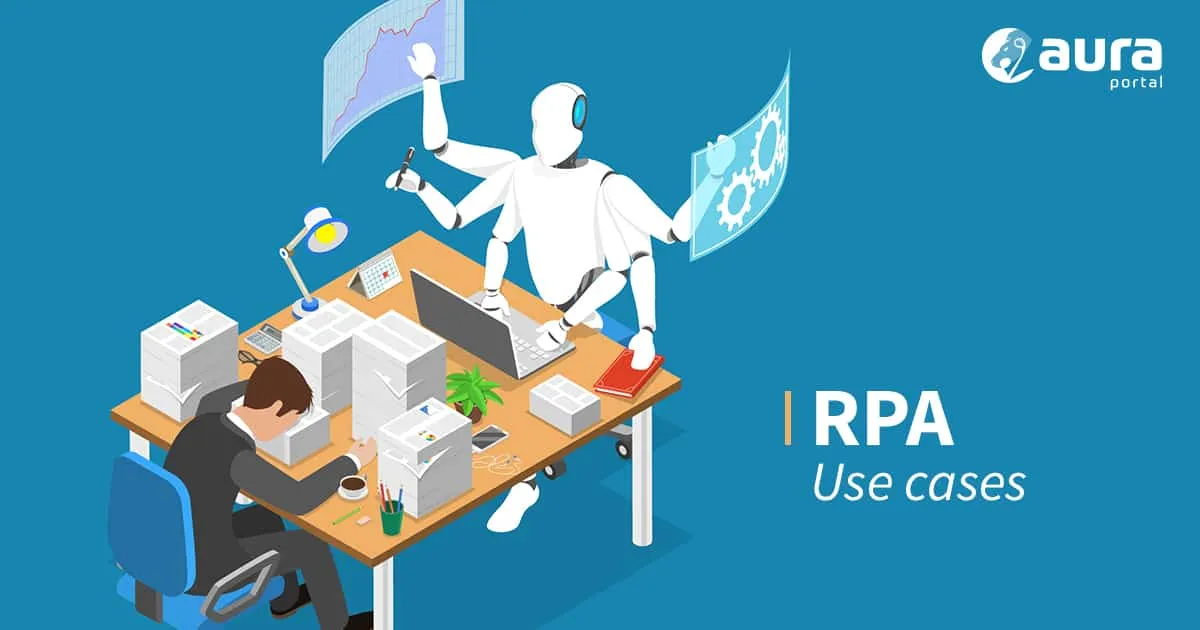RPA Use Cases
Blog: AuraQuantic Blog
Robotic Process Automation (RPA) maintains an upward trend and companies are aware of the significant and rapid benefits its implementation can bring, but they may not be so clear on what this technology consists of or which processes should be applied. Therefore, we will start with a brief explanation and then analyze the most common RPA use cases in companies today.
What is RPA?
Software robots, more commonly known as RPA technology, are computer programs that have the ability to interact with the system similarly to how a human would; Generally, software robots are configured to act on the graphical interface layer, although due to their software nature, they can also act on other levels (system console, web services, etc.).
RPA generic capabilities
RPA potentially has the power to:
- Extract or insert structured data in Excel, databases or forms, etc.
- Interact with applications, the system’s graphical interfaces, or even virtual machines.
- Access applications, either through the graphical interface or through web services.
- Process data at high speed.
- Establish logical flows based on the data.
When to use RPA
Although it is remarkable technology, RPA is not an adequate solution for all the company processes. In the scenarios that require human intervention to perform tasks or make decisions, for data generation and the orchestration of people, data, and systems, you will need Business Process Management (BPM).
In general, software robots can be used in scenarios that meet the following characteristics:
- The process can be defined with clear rules and does not depend on human intervention or decisions.
- The robot must be started with a digital trigger; for example, by clicking on a certain button.
- Robot logic is based on purely digitized data.
- The volume of workload is high and the actions to be performed are repetitive.
To know more about when to use this technology you can consult this comparison guide of RPA and BPM.
RPA use cases
Let’s look at the main use cases that companies and organizations currently benefit from.
Integration of Legacy Applications or systems.
All companies have to deal with some kind of “Legacy” system. The “Legacy” (or inherited) applications are the computer programs that have been used for many years to manage the company and that for some reason have not been kept up to date in terms of technology.
This makes these applications vital to the core of the company due to the vast amount information stored within them, but the fact that they are not adapted to current trends and technological standards makes them a headache when trying to get them to interact with new programs; The reason is that they do not have an API for integration, and making custom developments for each application is not usually an option.
The following video shows AuraPortal’s integration capabilities with RPA systems (the demo uses UiPath):
Data extraction and recording using OCR
Some of the most tedious tasks for any company are those related to administration and accounting due to the large volume of digital and physical documents that need to be handled.
RPA is a technology widely used in tasks to extract data from scanned documents because, among its extraction mechanisms, they usually have OCR (Optical Character Recognition) tools, which eliminate the need to make manual data transfers; this results in huge time savings for employees and decreases the probability of manual errors.
Movement of invoices, payrolls and other documents
Regarding the previous point, these tedious tasks cannot be avoided and must be completed in one way or another.
It is simply a case of moving digital documents from one point to another, either because an external manager leaves payrolls on a platform for them to be downloaded or because certain providers always send invoices as attachments by email, and we want to integrate them in our management platform (BPM, ERP, CRM or other).
These are usually simple procedures but they take up a lot of an employee’s time, since they are mechanical, repetitive and high-volume tasks. Luckily, such procedures are likely to be automated with RPA robots, through click, navigation, and application opening actions.
Onboarding distributors, customers and employees
Registering users in various systems is one of the strengths of RPA, as it usually involves filling in brief registration forms.
In general, automating the extraction of structured data (based on a web form, an Excel file or database), a few clicks, and the insertion of data into a form is usually all that’s needed to carry out these types of tasks.
Update data in CRM, ERP or other systems
Sometimes it is not possible to integrate all the systems used in a company, and data duplication is difficult to avoid. To prevent such duplicity, it is common to find RPA bots whose sole purpose is to access several systems and update or input some data (for example, update an item in an inventory) when there is a change in any of the core company applications.
The post RPA Use Cases appeared first on AuraPortal.
